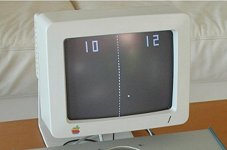Obviously the chemistry of aging plastics is complicated. But we all know the discoloring and destructive effects that direct sunlight has on many types of plastics. A bleaching effects on many dye molecules that give colored plastic its color. This is why my restoration method, for white plastic computer panels (not keycaps) leaves plastic in the dark or shade, actually lengthening its life.
I'm not sure all the myths were busted with Science in the video. All good experiments have controls, and for this problem it would require much longer time frame testing and more input from materials Engineers, though specifically it would require before and after high magnification both light and Electron Microscopy of the treated surfaces. And then as mentioned the force tests for any change to how brittle the plastic is.
I would not claim to be an expert in the effects of oxidation & bleaching on plastics (either by chemical or photon treatments) but there is one thing I am fairly confident about; these are both damaging processes to a surface and they break chemical bonds, possibly creating microscopic pits, crevices & cracks. The net effect for some plastics where it is optically visible (not necessarily ABS) but certainly Acrylic, is to start microscopic cracks which can later with force lead to fracture of the material. Most people are familiar with the glistenings that appear in clear acrylic panels after chronic sunlight exposure and in this case they appear within the material as well as on the surface.Clearly the molecular bonds are breaking. Sunlight turns Nylon to powder.
Most surfaces, plastics, metals etc, appear more immune to any kind of surface damage if they are highly polished, presumably one part of this effect is that the surface area is reduced to its minimal value.
For whitening vintage yellowed computer equipment panelwork (excluding keycaps), I have chosen not to use any retrobrite like methods myself, because I discovered a white quick drying highly volatile solvent spray paint (Holts Dupli-color auto spray) that produces a very fine layer,preserving any underling pattern on the plastic's surface. The solvent, briefly before drying (in seconds to minutes) reacts with the plastic surface fusing the paint to it with a molecular bond. This protects the surface from future light expose too.It becomes pretty well impossible to tell that the plastic has had paint applied.
I have mentioned this product on other threads where I used it to restore some IBM5153 and Apple II VDU's. The bond is so good that if one attempts to scratch the plastic the groove created appears to be a groove in solid plastic, there is no layering of the paint, or lifting or flaking. If effectively becomes one with the underlying plastic and simply alters its surface color. This is the only paint I have discovered which behaves this way, due to its solvent reacting with the surface, but not so slowly that it melts away any surface patterns but fast enough to fuse the paint color to the surface. It dries in minutes if a thin layer is applied and is available in many shades for the automotive industry, so its easy to use it to resurface grey or other colored plastics. Nearly every time the issue of "paint" is bought up, remarks are made about it flaking off, obscuring underlying patterned surfaces, but this paint does not behave this way at all. Use the wrong paint and it will probably be a disaster as most speculate.
In any event, I would never use paint on a Keycap. I have found with those a very good result can be obtained, getting rid of most (not all) of the yellowing is simply by polishing the keycap with the fine grade of Novus plastic polish. The surface develops a good gloss which I think helps protect it and the yellowing is reduced. Perhaps with these retrobrite then the Novus to help restore the surface could be a treatment for complete whitening.
I have attached a photo of the restored Apple VDU, but the resolution is limited. But, I'm sure if I handed this to any vintage computer enthusiast and asked, has this VDU been "painted" ? they would look and say no, but it looks brand new.

